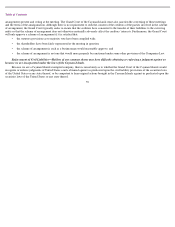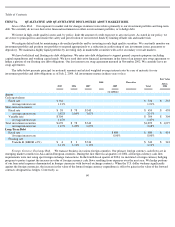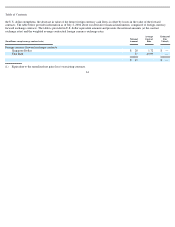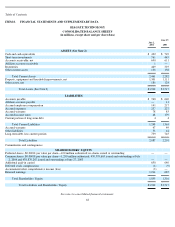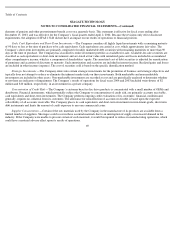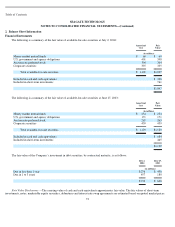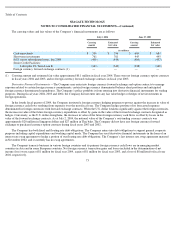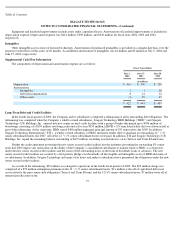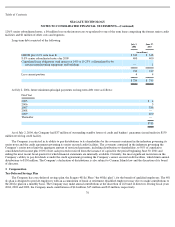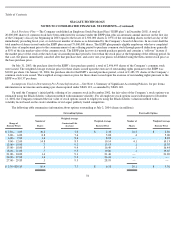Seagate 2003 Annual Report Download - page 70
Download and view the complete annual report
Please find page 70 of the 2003 Seagate annual report below. You can navigate through the pages in the report by either clicking on the pages listed below, or by using the keyword search tool below to find specific information within the annual report.
Table of Contents
SEAGATE TECHNOLOGY
NOTES TO CONSOLIDATED FINANCIAL STATEMENTS—(Continued)
elements of pension and other postretirement benefit costs on a quarterly basis. This statement is effective for fiscal years ending after
December 15, 2003, and was effective for the Company’s fiscal quarter ended April 2, 2004. Because the revisions only effect disclosure
requirements, the adoption of SFAS 132-R did not have an impact on our results of operations or financial position.
Cash, Cash Equivalents and Short-Term Investments —The Company considers all highly liquid investments with a remaining maturity
of 90 days or less at the time of purchase to be cash equivalents. Cash equivalents are carried at cost, which approximates fair value. The
Company’s short-term investments are primarily comprised of readily marketable debt securities with remaining maturities of more than 90
days at the time of purchase. The Company has classified its entire investment portfolio as available-for-sale. Available-for-sale securities are
classified as cash equivalents or short-term investments and are stated at fair value with unrealized gains and losses included in accumulated
other comprehensive income, which is a component of shareholders’ equity. The amortized cost of debt securities is adjusted for amortization
of premiums and accretion of discounts to maturity. Such amortization and accretion are included in interest income. Realized gains and losses
are included in other income (expense). The cost of securities sold is based on the specific identification method.
Strategic Investments —The Company enters into certain strategic investments for the promotion of business and strategic objectives and
typically does not attempt to reduce or eliminate the inherent market risks on these investments. Both marketable and non-marketable
investments are included in other assets. Non-marketable investments are recorded at cost and are periodically analyzed to determine whether
or not there are indicators of impairment. The Company’s results of operations for fiscal years 2004 and 2003 included write-downs of $2
million and $10 million, respectively, in an investment in a private company.
Concentration of Credit Risk —The Company’s customer base for disc drive products is concentrated with a small number of OEMs and
distributors. Financial instruments, which potentially subject the Company to concentrations of credit risk, are primarily accounts receivable,
cash equivalents and short-term investments. The Company performs ongoing credit evaluations of its customers’ financial condition and,
generally, requires no collateral from its customers. The allowance for noncollection of accounts receivable is based upon the expected
collectibility of all accounts receivable. The Company places its cash equivalents and short-term investments in investment-grade, short-term
debt instruments and limits the amount of credit exposure to any one commercial issuer.
Supplier Concentration —Certain of the raw materials used by the Company in the manufacture of its products are available from a
limited number of suppliers. Shortages could occur in these essential materials due to an interruption of supply or increased demand in the
industry. If the Company were unable to procure certain of such materials, it would be required to reduce its manufacturing operations, which
could have a material adverse effect upon its results of operations.
69


